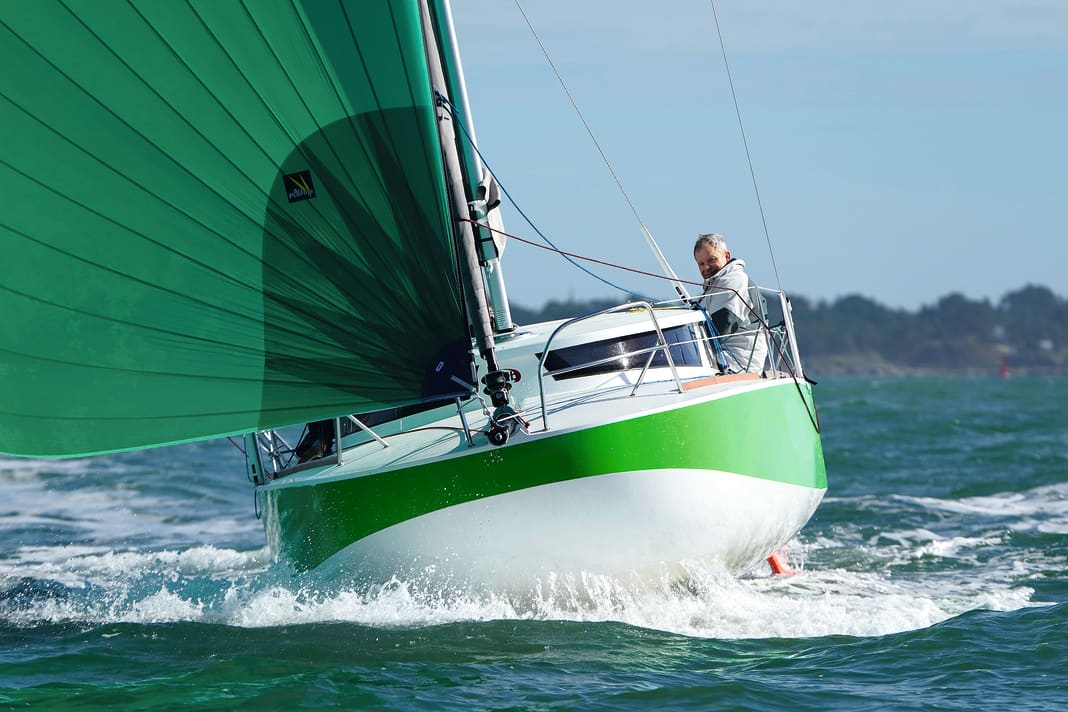





The forward, pointed end of a ship - this is how the bow is commonly described. As a rule, this banal and concise description gets to the heart of the matter. However, no rule is without exception, as is the case in yacht building - it is well known that there are ships without a bow in the usual sense, they are called scows. These are neither new nor particularly exciting, but simply rare in this country. The most visually striking feature of scows is the wide, extremely flattened bow section without a sharply cut stem.
In the ocean racer scene, the boats with the flat scow bow have become the measure of all things, even in the Mini 6.50 class. IDB Marine in Brittany currently produces the most successful series-produced minis.
However, the boats in the Mini 6.50 class also appear to be of interest to sailors who just want to have fun with them and do not necessarily have a big offshore career in mind. IDB boss Pascal Benois reports surprisingly frequent requests for a touring and family-friendly counterpart to the pure racing flounder, which is supplied without any interior fittings.
Mojito 6.50 as the smallest deck saloon yacht
The shipyard has now responded to this by designing a new deck with a higher cabin superstructure and a continuous all-round window front for the fast hull of the Maxi 650. The fixed ballast is replaced by a hydraulically retractable swivelling keel and the boat is fully equipped for touring below deck. The result is the Mojito 6.50, probably the world's smallest real deck saloon yacht with seating and berths for up to four adults. And all this in a hull that is only slightly longer than that of a Flying Dutchman (FD) regatta dinghy, for example.
However, the minis are also excessively wide in relation to the hull length, namely an impressive 3.00 metres, including the Mojito 6.50. This corresponds to an aspect ratio of just 2.16. Normal boats, on the other hand, are usually around three times as long as they are wide, with an average aspect ratio of 3.0.
The disadvantages are obvious: limited space in harbours and restricted transportability by road, and only with a special permit. Nevertheless, the Mojito 6.50 with its raised canting keel, the two short stub rudders and a reduced draught of just 80 centimetres could also be launched and retrieved via a suitable slipway. And because the mast is positioned on the cabin superstructure, it can also be easily raised by hand using optional hinges at the base of the mast.
Amwind, the Mojito 6.50 is not a hit
It is well known that the courses against the wind are not the Scows' favourite discipline. Nevertheless, the small Mojito 6.50 shows a decent performance potential even upwind. The high dimensional stability of the wide hull with its hard chine edges is remarkable. The ride becomes even sportier with additional coloured cloth. The gennaker is around 50 square metres in size, is set on a 1.40 metre extendable bowsprit and is pulled right up to the top of the mast. With a wind of just under 15 knots in the test, the log sometimes shows double-digit values.
The Mojito 6.50 is already very well and extensively equipped from the shipyard. Unfortunately, its price is also quite high in comparison.
Technical data:
- Length/width 6.50/3.00 m
- Draught (swing keel) 0.80-1.85m
- Weight 1.2 tonnes
- Ballast/proportion 420 kg/35 %
- Sail area/STZ 38.0 m²/4.3
- Outboard motor
- Base price 77,020
